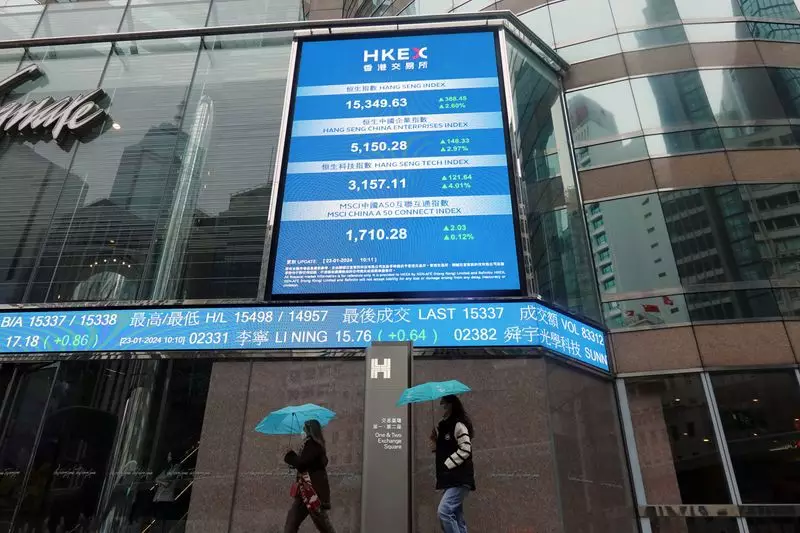As investors gear up for the trading week ahead, Asian markets brace for potential turbulence triggered by escalating U.S. bond yields and a robust dollar. This unease comes on the heels of a tumultuous Friday on Wall Street, which has ignited doubts regarding the sustainability of local investments across the region. The ripple effects of Federal Reserve Chairman Jerome Powell’s recent remarks—emphasizing a patient approach to interest rates—continue to resonate within global markets, leading to increased uncertainty.
The yield on the 10-year U.S. Treasury bond recently breached the 4.50% mark, a level not seen in over five months, prompting a sell-off on Wall Street that saw the Nasdaq Composite tumble more than 2%. This marks a disconcerting four-day consecutive decline for the index, a trajectory not recorded since April, which underscores broader investor pessimism. Furthermore, the MSCI World equity index is also experiencing a similar downturn, marking a four-day losing streak—the longest since early September. The Asia ex-Japan index isn’t immune either; it has now witnessed a 4.35% decline, the steepest weekly drop since June 2022.
Against this backdrop, emerging market investors find themselves navigating a series of formidable challenges. The U.S. dollar has surged significantly, with last week’s dollar index climbing by 1.6% to reach its peak in over a year. This spike constitutes a seventh consecutive week of gains for the dollar—a trend that forecasts potential correction but seems, for the moment, driven by robust momentum. Amidst such conditions, Goldman Sachs’s emerging market financial conditions index recently escalated to a three-and-a-half-month high, suggesting a more stringent environment for emerging markets.
Adding to the caution, Barclays strategists have highlighted concerning outflows from emerging market funds, noting that this trend has persisted for five weeks. Bond fund outflows, in particular, are noteworthy and represent escalating apprehension amongst investors regarding the flow of capital into these markets. Such signs of withdrawal amplify the prevailing mood of trepidation surrounding emerging markets, which are increasingly under scrutiny given the aggressive movements in global economic indicators.
Asian Economic Indicators on the Horizon
Looking at the Asian calendar for the day ahead, the scheduled economic releases are relatively sparse, but certain indicators stand out. Notably, New Zealand will release its producer prices, while Singapore prepares to unveil its non-oil trade figures. Japan’s machinery orders will also grab attention, along with earnings reports from financial giant Mitsubishi UFJ and GDP figures from Thailand.
For Thailand, there is a glimmer of optimism within economic forecasts. Economists anticipate the country’s growth rate accelerating to an annualized 2.6% in the recent quarter, up from 2.3%, indicating the fastest growth pace in one-and-a-half years. Remarkably, the Thai baht has exhibited resilience, depreciating only 1.3% against the dollar year-to-date. Market expectations also reflect a tempered outlook, predicting less than 50 basis points of easing from the Bank of Thailand by the close of next year, which may contribute to stabilizing investor confidence.
Compounding the economic factors, strained relations between the U.S. and China remain pivotal. Recent interactions between leaders of both nations have been charged, with Chinese President Xi Jinping emphasizing critical non-negotiable issues such as Taiwan and human rights. Such geopolitical complexities add another layer of uncertainty that investors must navigate carefully, as any shifts in diplomatic relations can have profound consequences for economic policies and market stability.
As Asian markets prepare to open, the convergence of rising U.S. bond yields, a strong dollar, and geopolitical tensions presents a multifaceted matrix of risks and opportunities. Investors will need to tread cautiously, evaluating how these factors intertwine before making significant commitments to local assets. With emerging markets particularly vulnerable, strategic foresight will be essential in choosing the right paths forward amidst turbulent waters.

